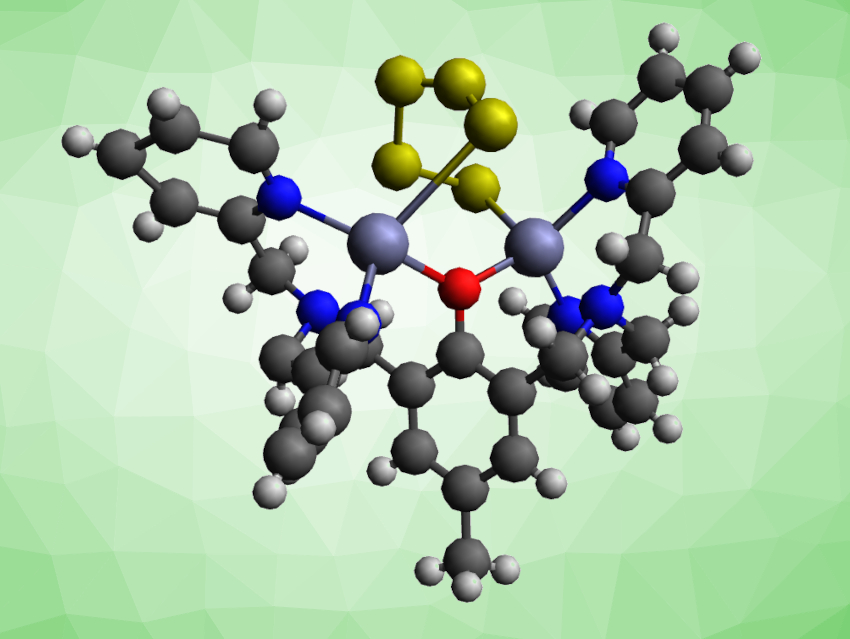Zinc is an essential element for living organisms. Zinc thiolates, for example, are commonly found in biological systems and are interesting research subjects. Binuclear zinc(II) thiolate complexes are less well explored than their mononuclear counterparts.
Kamal Hossain and Amit Majumdar, Indian Association for the Cultivation of Science, Kolkata, India, have studied the reactivity of the binuclear zinc(II) bis(benzenethiolate) complex [Zn2(BPMP)(SPh)2]+ (HBPMP = 2,6-bis[[bis(2-pyridylmethyl)amino]methyl]-4-methylphenol). The team reacted this complex with solid elemental sulfur (S8). They observed a redox reaction of the coordinated benzenethiolate ligands that resulted in the formation of the unprecedented complex [Zn2(BPMP)(μ2-S5)]+.
This unusual complex (pictured) features a chelating, chain-like pentasulfido ligand of the type S52–. Diphenyl disulfide (PhSSPh) was formed as a byproduct of the reaction. The team also studied the reactivity of the pentasulfido complex. For example, it can react with up to 3 equivalents of PPh3 to generate Ph3PS and new binuclear Zn(II) polysulfido complexes with shortened sulfur chains (Sn2–; n = 2,3,4). The coordinated pentasulfido chain can also be transferred to organic compounds such as PhCH2Br or Ph(C=O)Cl.
- Polysulfido Chain in Binuclear Zinc(II) Complexes,
Kamal Hossain, Amit Majumdar,
Inorg. Chem. 2022.
https://doi.org/10.1021/acs.inorgchem.2c00555




